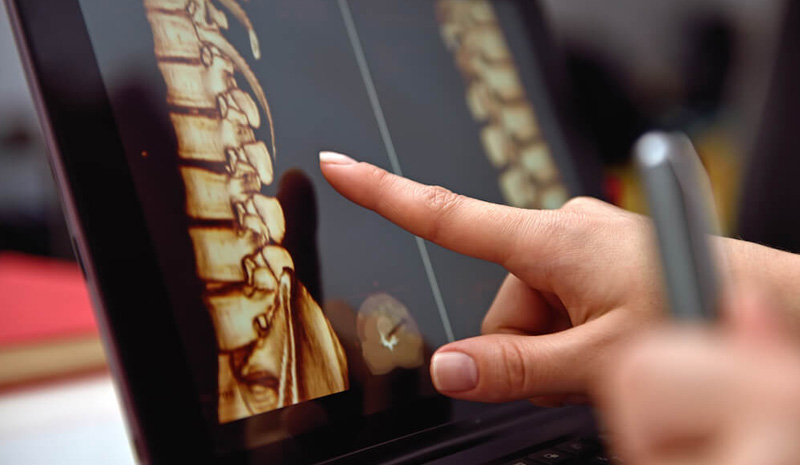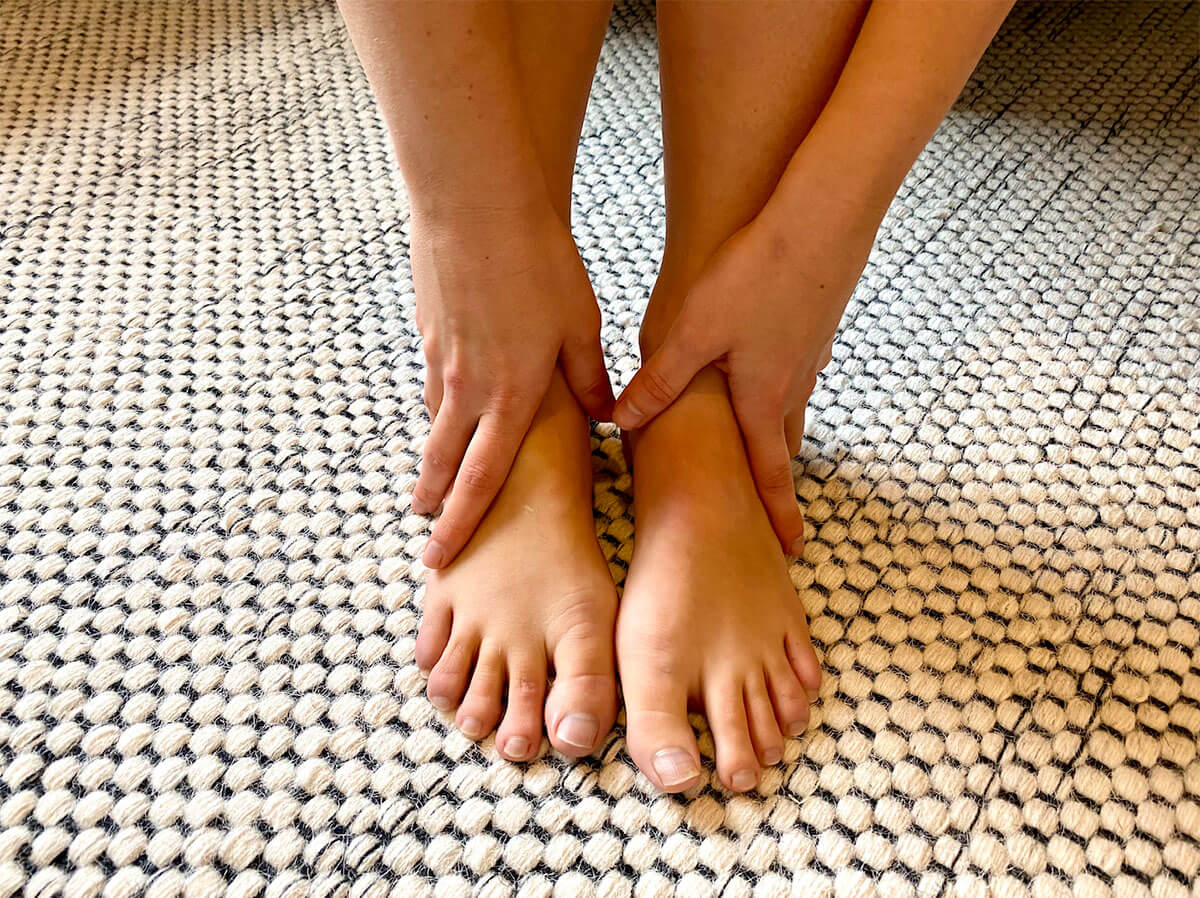Have you recently had a spine injection to relieve pain? Maybe you have been told you need one and want to know more about it? Or maybe you are worried about exactly what this means?
At Complete Pilates we see hundreds of people who are saying the same thing.
Meet Mr Alexander Montgomery. Below, he is answering all the questions we hear on a daily basis in the studio and online! Remember, if you want to know more just ask us.

Do I need a spine injection?
Spinal steroid injections are given for two reasons; therapeutic and diagnostic.
A therapeutic injection is used when you have persistent symptoms and pain in your arms, legs, back or neck despite committing to physiotherapy or Pilates with an appropriate practitioner. It may also be used if your pain or other symptoms are too significant to complete your rehabilitation. This pain may be caused by a herniated disc, narrowing of the spinal canal (stenosis) or joint degeneration (a natural age-related process).
Diagnostic injections can help us determine which structure around your spine is causing your symptoms and helps your Consultant plan your long-term care.
What does a spine injection do?
Injections aim to reduce the localised swelling and inflammation in the area with the goal of reducing pain and stiffness. It gives your therapist a window of opportunity to help improve your flexibility, stability and strength and gives you a break from the pain cycle. In general, it aims to make you feel better so you can do more.
Are spine injections painful?
The injected area can be painful in the first few hours or days following the procedure. Injections are often administered with local anaesthetic to help to reduce the localised pain. Your doctor may also give the injections with sedation which aims to minimise any discomfort you feel during the procedure itself. You will likely be given advice about your medications before or after discharge. If you do not understand any of this make sure to ask questions before you leave.
How long do spine injections last?
Contrary to what many people are told, there is not a definitive amount of time for which they will help. Unfortunately, in some people it does not make any difference. In a minority of people, it can last for years, but for most patients it lasts between weeks and months. A second injection may be needed, depending on your symptoms, to give the rehabilitation process more time to work.
What should I do after a spine injection?
Although you may be sore after the injection, you should keep as mobile as possible within your pain limits. The local anaesthetic is administered with the steroid to reduce this initial soreness. However, you should be able to walk around within an hour of the procedure. Patients are encouraged to go back to work the next day.
General rules after an injection are:
- Keep mobile but stay away from any sport, exercise or heavy lifting for the first week following the injection. This allows time for the steroid to settle in and have its maximum effect.
- Some patients do get a “steroid flare” where the pain increases in the first week. Stay away from impact sports such as running, cycling, or weights until these symptoms have settled.
- Continue with any pain medication you were taking prior to the injections for at least two weeks. If the pain has settled consult your Consultant before stopping them.
- Book to start your rehab with your physiotherapist or osteopath 7-10 days after your injection.
- Make sure you have a follow up with your Consultant to assess how you are progressing following the injection. This is used to help plan the rest of your treatment and answer any questions you have. This is normally between 3-6 weeks after but depends on your Consultant.
When can I drive after a spine injection?
You can generally drive the following day.
When can I fly after a spine injection?
Generally, you are safe to fly a few days after your injection.
If you have a headache when standing upright after the injection you should not fly. This could be a small spinal fluid leak so please seek advice from your Consultant. The risk of spinal fluid leak is about 0.2 to 0.04%, so very low. The symptoms are headaches when you stand up which go away when you lie down and normally settle over 2-7 days.
Will my pain come back after a spine injection?
The pain can come back after a spine injection. The aim of the injection is to reduce the swelling and inflammation around the disc, nerves and joints. If you continue to put your back under the stress that you did before the injection, then it can get inflamed again. The idea of the injection is to give you less pain so that you can rehabilitate and hopefully offload the area. If this is successful, then the pain will hopefully not come back. If the pain does return, then you may need more injections.
When can I return to exercise after a spine injection?
We normally advise people to not do too much for a week. This does include gentle exercise as well. This gives the steroid time to work and reduce your symptoms as much as possible. Some people do get a ‘steroid flare’ after the injection. This is unfortunately something that cannot be prevented and will mean that your symptoms get temporarily worse. If this happens it is important that you are given the right exercises and do it well. It is always important to return to exercise with some supervision to make sure you are doing things well. Your Physiotherapist or Consultant should be able to help you with this.
Should I see a physiotherapist after a spine injection and if so when?
In short yes. One of the main reasons for a steroid injection is to give you a pain free period of time to allow you to do rehabilitation. It is important that you use this time to strengthen, mobilise and stabilise, which will offload the affected area.
You will be recommended to go back to your rehabilitation about a week after the injection, but you should discuss this with your consultant.
How do you do a spine injection?
A spine injection is normally done in hospital as a day case which means you will be in and out in a day. It is done with the help of X-ray to make sure that we inject the exact level, and often with sedation to make you comfortable.
On the day, your Consultant will go through a consent form with you and tell you exactly what is going to happen. For any injection to your lower back, you will normally lie on your front. For any neck injections, you are generally on your side or back.
The area is cleaned with a special liquid which makes it sterile and often you will have surgical drapes surrounding the area. The injection normally takes 5-10 minutes depending on what is done. You will usually spend 15-20 minutes in the recovery bay before going back to the ward.
Are there any side effects to spine injections?
Like all medications there are potential side effects. Some are minor and temporary and some rare but more significant.
- Localised bruising to the skin
- Whitening, or pigmentation of the skin
- Reduction of fat in that area (fat atrophy)
- Dizziness (1.2%)
- Flushing with a period of warmth for several days (2.6%)
- Increase pain
- Increased or lower blood pressure
- Mood swings
- Irritability
- Anxiety
- Insomnia
- Instability in your blood sugar (diabetic patients should inform their primary care physicians about the injection prior to their appointment)
- A reduction to your immune system
- Spinal fluid leak
Excessive or prolonged usage of steroids (not a single steroid injection) can cause cataracts – a rare result of excessive and/or prolonged steroid usage, or severe arthritis of the hips or shoulders (avascular necrosis).
Data collection and research has shown that the risk of severe injection is reported to be 0.1-0.01%. The risk of damage to nerves is between 0.1% and 0.001%. In many of these cases the symptoms do resolve within a few weeks or months.
Steroid injections should not be performed on patients who have a local or systemic bacterial infection, are pregnant (if fluoroscopy is used), or have bleeding problems.
Education is key:
These blogs are designed to give information to everyone, however, it is important to remember that everyone is different! If you have not seen one of our therapists and have any questions about injuries, what you have read or whether this may be useful to you, please just ask. We are more than happy to help anyone and point you in the right direction. Our biggest belief is that education is key. The more you understand about your injury, illness and movement, the more you are likely to improve.





